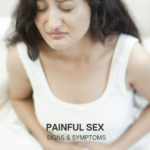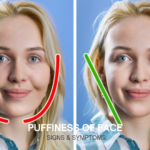Understanding Pale Stools: Causes, Diagnosis, and Treatment
Pale stools, also referred to as clay-colored or light-colored stools, can be a cause for concern as they often indicate an underlying medical condition. The color of stool is typically influenced by what you eat and the bile produced by the liver. Bile is a digestive fluid that is crucial in the breakdown of fats and is responsible for giving stool its characteristic brown color. When there is a disruption in bile production or its flow, stools can become pale. This article will delve into the causes, diagnosis, and treatment of pale stools.
Causes of Pale Stools
1. Liver Diseases
Liver diseases such as hepatitis, cirrhosis, and liver cancer can affect bile production. Hepatitis, an inflammation of the liver, can be caused by viral infections, alcohol abuse, or autoimmune conditions. Cirrhosis, which involves scarring of the liver tissue, can result from chronic alcohol abuse or prolonged hepatitis infection. These conditions impair the liver’s ability to produce bile, leading to pale stools.
2. Bile Duct Obstruction
The bile ducts transport bile from the liver to the gallbladder and small intestine. Obstruction in these ducts can cause pale stools. Common causes of bile duct obstruction include gallstones, tumors, cysts, and inflammation. Conditions such as cholangitis (inflammation of the bile ducts) and primary sclerosing cholangitis (chronic inflammation leading to scarring) can also result in bile duct obstruction.
3. Pancreatic Disorders
The pancreas plays a vital role in digestion and bile secretion. Conditions such as pancreatic cancer, pancreatitis (inflammation of the pancreas), and cystic fibrosis can affect the pancreas’s ability to aid in bile flow, leading to pale stools.
4. Gallbladder Issues
The gallbladder stores bile produced by the liver. Gallbladder diseases, such as cholecystitis (inflammation of the gallbladder) and gallstones, can impede the flow of bile, resulting in pale stools.
5. Medications
Certain medications can interfere with bile production and flow. Antibiotics, anti-inflammatory drugs, and birth control pills are some examples that might cause pale stools as a side effect.
6. Dietary Factors
Although less common, a diet extremely low in fats can result in pale stools. Fatty foods stimulate bile production, so a lack of fat in the diet might reduce bile production, leading to lighter stool color.
Symptoms Associated with Pale Stools
Pale stools are often accompanied by other symptoms, depending on the underlying cause. These may include:
- Jaundice (yellowing of the skin and eyes)
- Dark urine
- Itching
- Abdominal pain
- Nausea and vomiting
- Unintended weight loss
- Fatigue
Diagnosing the Cause of Pale Stools
Diagnosing the cause of pale stools involves a thorough medical history and physical examination, followed by specific diagnostic tests.
1. Medical History and Physical Examination
The doctor will ask about your symptoms, diet, medications, and any history of liver, gallbladder, or pancreatic diseases. A physical examination will focus on checking for signs of jaundice, liver enlargement, and abdominal tenderness.
2. Blood Tests
Blood tests can help identify liver function abnormalities, signs of infection, and markers of inflammation. Tests such as liver function tests (LFTs), complete blood count (CBC), and pancreatic enzyme levels are commonly performed.
3. Imaging Studies
Imaging studies such as ultrasound, CT scan, MRI, and ERCP (endoscopic retrograde cholangiopancreatography) are used to visualize the liver, gallbladder, bile ducts, and pancreas. These tests help identify obstructions, tumors, or structural abnormalities.
4. Stool Tests
Stool tests can check for the presence of bile and infections. A lack of bile pigments in the stool indicates an issue with bile production or flow.
Treatment of Pale Stools
Treatment of pale stools depends on the underlying cause. Addressing the root cause often resolves the issue with stool color. Here are some common treatment approaches:
1. Liver Disease Management
For liver diseases such as hepatitis or cirrhosis, treatment may involve antiviral medications, lifestyle changes (such as avoiding alcohol), and medications to manage symptoms and complications. In severe cases, a liver transplant may be necessary.
2. Bile Duct Obstruction Relief
Treating bile duct obstructions may involve procedures to remove gallstones, surgical removal of tumors, or endoscopic techniques to clear the ducts. In some cases, stents are placed to keep the bile ducts open.
3. Pancreatic Disorder Treatment
Treatment for pancreatic disorders depends on the specific condition. Pancreatitis may require hospitalization, fasting to rest the pancreas, and medications to manage pain and inflammation. Pancreatic cancer treatment may involve surgery, chemotherapy, and radiation therapy.
4. Gallbladder Disease Treatment
Gallbladder diseases are often treated with medications to dissolve gallstones or surgery to remove the gallbladder (cholecystectomy).
5. Medication Adjustment
If medications are causing pale stools, your doctor may adjust the dosage or switch to an alternative drug.
6. Dietary Changes
For diet-related causes, incorporating healthy fats can stimulate bile production and restore normal stool color. Consulting a dietitian can help create a balanced diet plan.
When to See a Doctor
While occasional changes in stool color can be normal, persistent pale stools should not be ignored, especially if accompanied by other concerning symptoms. Seek medical attention if you experience:
- Persistent pale or clay-colored stools
- Jaundice
- Severe abdominal pain
- Unexplained weight loss
- Dark urine
Early diagnosis and treatment of the underlying cause can prevent complications and improve outcomes.
Conclusion
Pale stools can be a sign of various underlying health issues, primarily related to bile production and flow. Understanding the potential causes, seeking timely medical evaluation, and receiving appropriate treatment are crucial steps in addressing this symptom. By taking proactive measures, you can ensure better health and prevent serious complications. If you notice persistent changes in stool color, consult a healthcare professional for an accurate diagnosis and personalized treatment plan.





